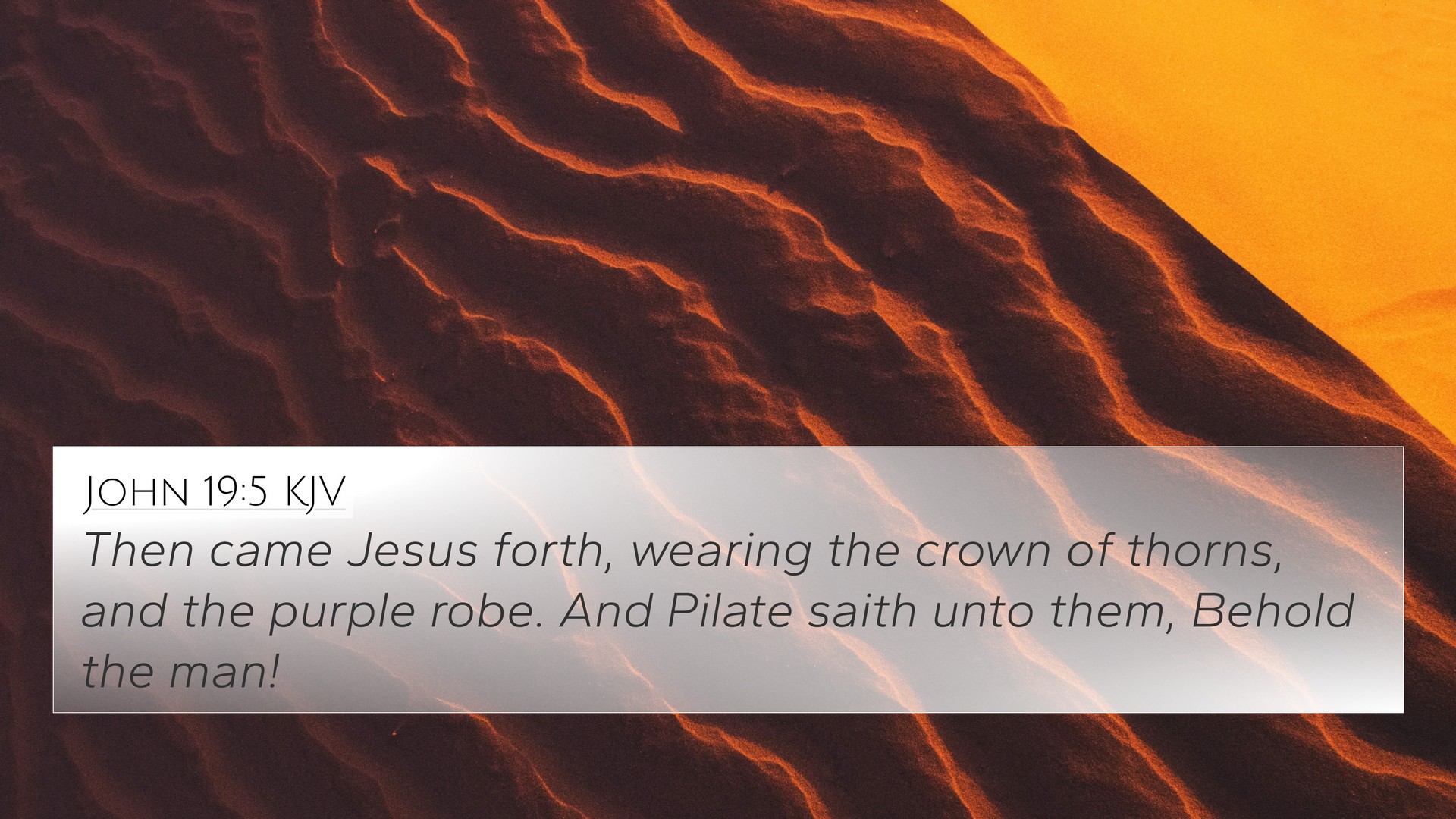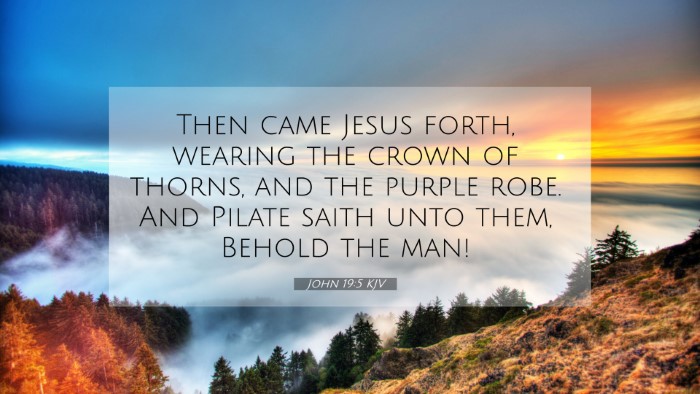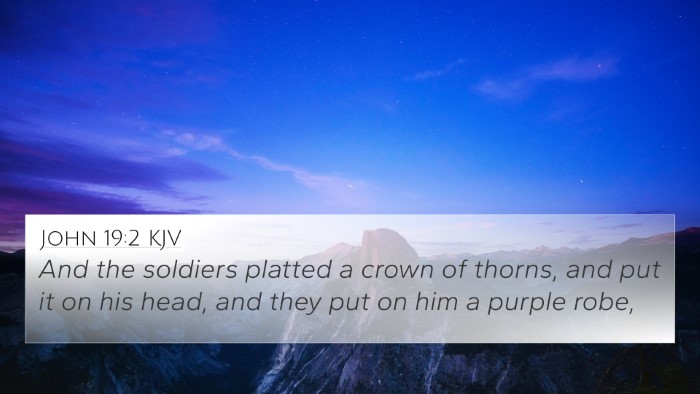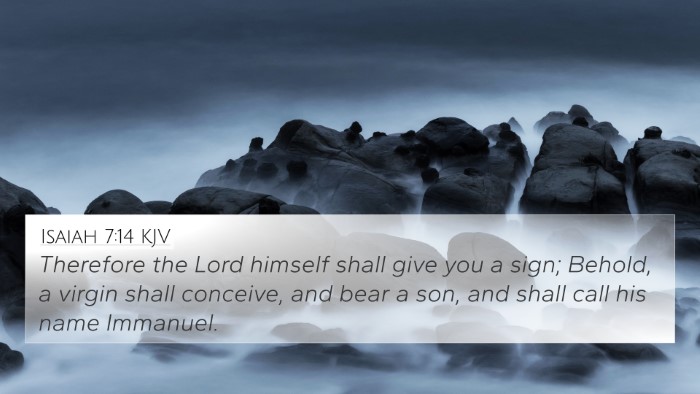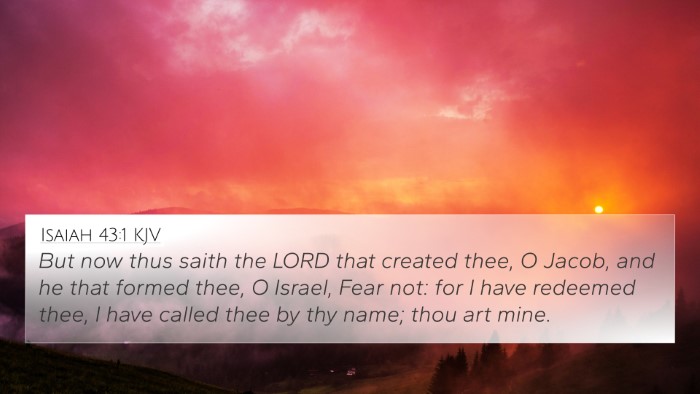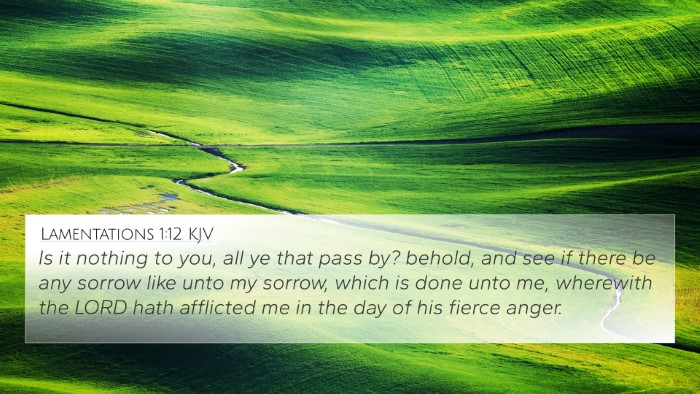John 19:5 - Summarized Meaning and Biblical Interpretation
Bible Verse: John 19:5 - "Then Jesus came out, wearing the crown of thorns and the purple robe. And Pilate said to them, 'Behold the Man!'"
Understanding John 19:5
This verse captures a pivotal moment in the final hours of Jesus’ life before the crucifixion. It highlights the humiliation endured by Jesus as He is presented to the people, adorned with a crown of thorns and a royal-like robe, mockingly signifying kingship.
Commentary Insights
Matthew Henry's Commentary
Matthew Henry emphasizes the deep irony in Pilate's proclamation, “Behold the Man!” He suggests that Pilate, amidst his reluctance to condemn an innocent man, inadvertently highlights Jesus’ true nature and purpose. The crowning with thorns symbolizes the suffering of Christ and foreshadows the spiritual kingship He will establish through His sacrifice.
Albert Barnes' Commentary
Albert Barnes elaborates on the physical suffering that Jesus endured, noting that the purple robe was significant of royalty, yet it was used to mock Him. He explains that Pilate’s gesture was both an attempt to evoke pity and to reveal the unjust treatment of Jesus. Barnes draws connections to Jesus’ identity as both the suffering servant and the rightful King, fulfilling Old Testament prophecies.
Adam Clarke's Commentary
Adam Clarke discusses the symbolism behind the crown of thorns, noting that it represents the curse upon the earth due to sin. Clarke stresses the theological implications of Jesus bearing this curse on behalf of humanity. He highlights Jesus' humility and the fulfillment of Isaiah's prophecy regarding the suffering Messiah.
Bible Verse Cross-References
- Isaiah 53:3: “He is despised and rejected of men; a man of sorrows, and acquainted with grief...” - This verse foreshadows the suffering and rejection of Jesus.
- Matthew 27:29: “And when they had platted a crown of thorns, they put it upon his head...” - A direct parallel illustrating the mocking treatment Jesus endured.
- John 1:14: “And the Word was made flesh, and dwelt among us...” - Connects to the incarnation and the humanity of Christ.
- Philippians 2:7-8: “But made himself of no reputation, and took upon him the form of a servant...” - Highlights the humility of Jesus in His suffering.
- Revelation 19:12: “His eyes were as a flame of fire, and on his head were many crowns...” - Indicates the ultimate Kingship of Christ, contrasted with His suffering in John 19:5.
- Luke 23:11: “And Herod with his men of war set him at nought, and mocked him...” - Another reference to the mockery and humiliation faced by Jesus.
- Matthew 5:11: “Blessed are ye, when men shall revile you...” - Reflects the value of enduring persecution for righteousness, similar to Jesus’ experience.
Thematic Connections and Interpretations
The verse serves as a profound moment of inter-Biblical dialogue, connecting the themes of suffering, kingship, and the fulfillment of prophecy. It contrasts Jesus’ current humiliation with the forthcoming exaltation as King of Kings.
Conclusion
John 19:5 is not just a moment of narrative in the Gospel but a significant theological declaration about the nature of Jesus Christ. By linking this verse with others, we gain a deeper understanding of His mission, the weight of the suffering He bore, and the eventual triumph over sin and death.
Tools for Bible Cross-Referencing
For those interested in exploring these connections further, utilizing tools for Bible cross-referencing can enhance understanding:
- Bible Concordances
- Bible Cross-Reference Guides
- Cross-Reference Bible Study Methods
Further Study
Those seeking to delve deeper might explore:
- Identifying connections between Old and New Testament.
- Diving into a detailed cross-reference between Gospels.
- Understanding variations in thematic representations across Biblical texts.
In Summary
This analysis of John 19:5, through a combination of respected commentaries and cross-references, provides a comprehensive view of not just the verse itself but also its place within the broader narrative of scripture. It serves as an invitation for further exploration and reflection on the profound message of the Gospel.
